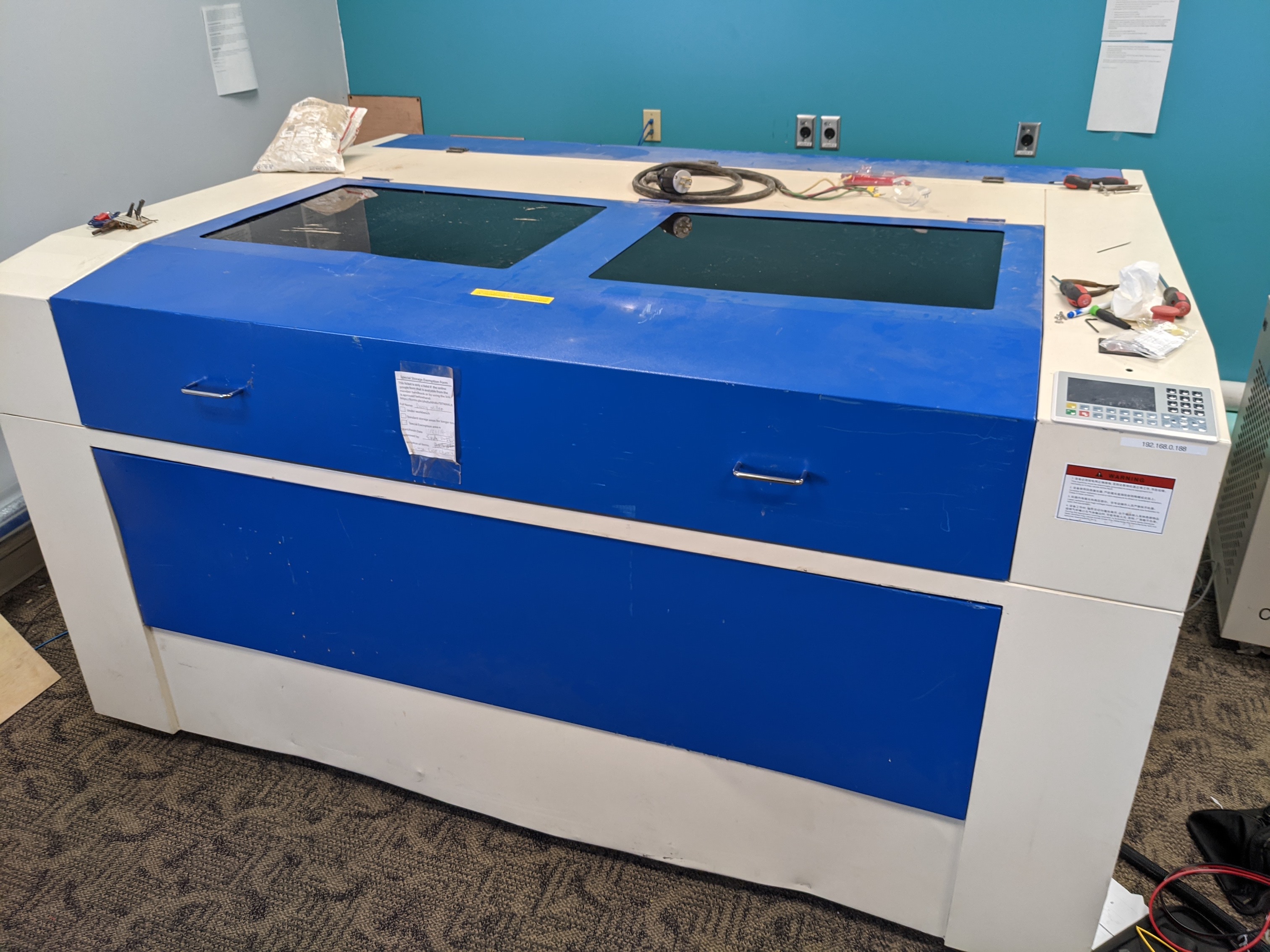Tarkin
Tarkin is the new large-format laser cutter in the space. It's a custom-built laser cutter based on an RF CO2 laser and CCM linear rail motion system with a Ruida RDC6445G controller running Lightburn software. It features 225W of power on a 1.6M x 1.0 M (63"x39") cutting bed and air assist.
It's quite large and capable -- we don't think there's anything like it in central Texas. We'll add a table of cutting capacities when we start shaking down the laser.
Tarkin is expected to be online by Nov 1, 2021. A new class will be required for users. The Ruida controller will utilize a workflow new for Asmbly lasers.
Terms (just proposed for now, following documentation needs editing to use these consistently)
Machine bed is the physical machine's work area.
Material is your physical stock- a piece of plywood, acrylic sheet, etc.
Workspace is Lightburn's work area on the PC.
Job is your content- vector/raster operations you want the laser to do. The location of the job on the machine bed is flexible and can be moved from the control panel, or it can be fixed.
Origins
Tarkin's origin is commonly set in one of three ways:
- Absolute coords, using a workspace the size of the machine bed. The location of your job is fixed and the user does not operate the ORIGIN button on the panel, as there is no user origin. The camera may or may not be activated.
- User origin, where your material is placed anywhere on the bed that is convenient, and the user moves the head to the desired origin point and presses "ORIGIN" to work around that spot. In this case, it is not important where the user places their job on the PC's workspace, or that the workspace be of the size of the laser's bed at all. Lightburn will automatically create a bounding box around all the user's job within the workspace, whether or not it is designated to be sent at that time. The user can specify the work origin to be in the center, any of the 4 corners (top left most common), or 4 sides (uncommon). It is possible to place the origin in a way that the job will eventually run off the machine bed, this will result in "FRAME SLOP ERROR" and will not run. Correct the origin position and use the FRAME button to verify its bounding box.
- Camera-placed absolute coords- the material can be placed anywhere visible to the alignment camera, the Lightburn workspace is set to the full machine bed size, the user jogs the gantry out of the line of sight (not obscuring your material), and then Lightburn takes a camera snapshot of the machine bed that shows up as a graphical background for the work on the workspace. The very rear of the machine is not visible to the camera for alignment purposes. The user moves and aligns the vectors/raster job across the workspace so it is over the actual material by moving the job in XY and, if necessary, rotation and resizing may also be done. Lightburn will automatically change to absolute coordinates in camera mode, and the user does not operate the ORIGIN button. This method can also be used for hybrid work- for example, color printing paper graphics that were glued to plywood earlier, this material is then placed and aligned via camera and cut out into desired shapes with the laser, or an existing manufactured object is placed on the bed and the job aligned over it. There is no auto-recognition of printed registration marks, but printed registration marks do make alignment easier and more accurate. Another example might be a unique horizontal slice of a tree can be traced and artwork can flow with that arbitrary shape in size and alignment. So far, the accuracy has been better than 2mm, and may be improved with further calibration.
Maintenance
This tool is owned by Danny Miller and hosted at Asmbly for members to use. Please contact the workshop committee if maintenance is required.
